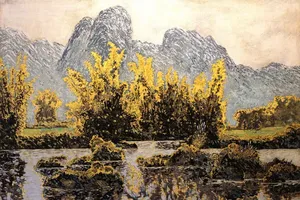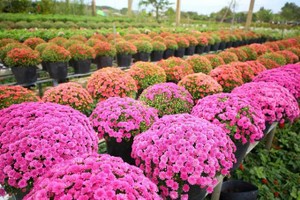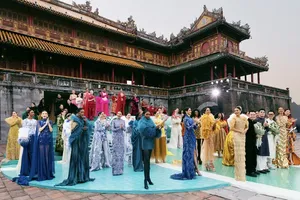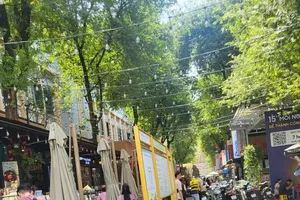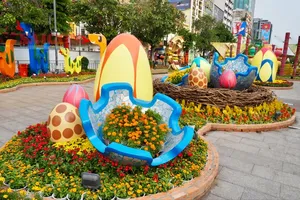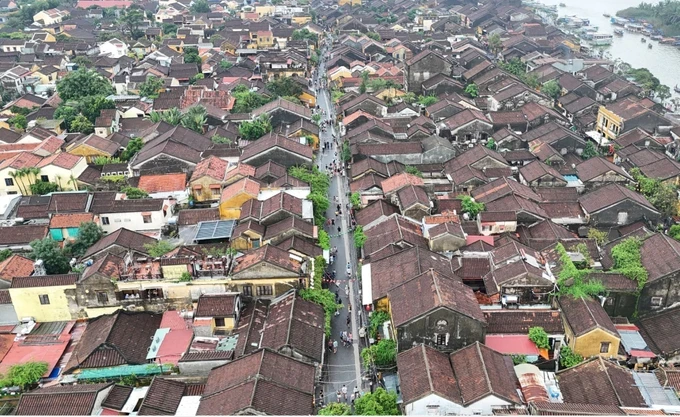
In Hoi An Ancient Town, for example, many ancient houses now serve as cafes. Their courtyards have been renovated with plastic or wooden flooring, and additional structures have been built to accommodate customers or expand living spaces, thus damaging the original landscape of these historical sites. Notably, numerous tourists are drawn to the rooftop cafes on Tran Phu Street for photo opportunities.
D.H., the manager of one such cafe, explained that visitors are allowed to take photos only in designated areas and are prohibited from climbing onto the yin-yang tiled roofs. Staff members are stationed on different floors to prevent unsafe behavior that could damage the ancient roofs and endanger visitors.
In Hoi An's ancient town, approximately 30 percent of the houses are owned by outsiders who have purchased them for commercial purposes. Another 40 percent belong to local residents who have moved away but continue to rent out their properties. Only about 30 percent of the houses are still occupied by their original owners.
Hoi An Ancient Town, a living heritage site, faces the delicate balance of preservation and development. Director Pham Phu Ngoc of the Hoi An Cultural Heritage Conservation Center shared that to protect its heritage, the local government has implemented a comprehensive strategy.
This includes a revenue-sharing system from tourism fees to support residents in maintaining their historic homes. Additionally, a classification system for heritage properties ensures that those in less accessible locations receive higher levels of funding for restoration and preservation.
However, the issue of "heritage loss" remains a pressing concern. Chairman Nguyen Van Son of the Hoi An Town People's Committee acknowledged that many families have sold their ancestral homes due to financial difficulties or disagreements over ownership and management.
Typically, these properties are purchased by investors from Hanoi or Ho Chi Minh City, primarily for commercial purposes. Once commercialized, these investors prioritize profitability over heritage preservation concerns. The town leaders have considered encouraging local inhabitants to keep their ancestral homes or purchasing sold houses, yet the cost for this task is rather large while there is not yet any formal regulations to use public budget for such tasks.
Traditional wooden garden houses in Thua Thien-Hue Province have long been integral to the city's poetic urban landscape. However, time has witnessed the disappearance of many garden houses, with numerous others being subdivided and structurally altered. Even within many surviving garden houses, modern construction elements have begun to emerge.
At the wooden garden house of Nguyen Thi Ngo at the address of 3 Pham Thi Lien Street, Kim Long Ward, Hue City, the centerpiece is a traditional wooden house featuring three compartments and two lean-tos. After nearly 140 years, crucial elements including the tiled roof system, wooden framework affected by termites, broken pillars, and water damage have deteriorated significantly. Moreover, the unkempt garden premises have failed to attract tourists.
Ngo shared that in early September 2024, her traditional house underwent complete dismantling of its roof tiles and wooden framework for restoration. The system of wall panels, doors, cross-beams, and ceiling boards will see partial replacement, restoration of severely damaged components, and rehabilitation of salvageable elements for reuse.
Standing Vice Chairman Tran Song of the Hue City People's Committee informed that this is the first traditional wooden house in Hue City to receive restoration and anti-degradation treatment under the 2023-2026 policy initiative supporting the protection and promotion of distinctive garden houses in Thua Thien-Hue Province, with funding of approximately VND1 billion (US$40,000).
Over 40 garden houses in Hue and Phuoc Tich Village have volunteered to participate in a program to preserve and revitalize these historic properties. By restoring and repurposing these houses for tourism purposes, such as offering homestay experiences and culinary tours, owners can generate income while contributing to the preservation of Hue's cultural heritage and the development of sustainable tourism.
While initially following a model similar to Hue City, the preservation and utilization of privately owned ancient houses in Hoa Vang District of Da Nang City faces significant challenges in balancing stakeholder interests.
Do Thanh Tan, Head of Hoa Vang District's Culture and Sports Division, said that the locality has then successfully piloted an eco-tourism model encompassing an ancient house area - the Community Eco-Tourism Village in Thai Lai Commune, featuring the 200-year-old Tich Thien Duong ancient house as its main attraction. Evidently, establishing mechanisms for preserving privately owned heritage cannot be achieved overnight; ultimate success depends heavily on owner awareness.
However, this remains a long-term issue requiring time to develop community aesthetics. In the immediate term, promoting economic benefits alongside appropriate rewards and penalties for both public and private heritage preservation efforts may provide an effective solution for keeping heritage "alive" in contemporary society.
At the 8th session of the 15th National Assembly, Deputy Duong Van Phuoc from Quang Nam Province highlighted the unique characteristics of Hoi An Ancient Town compared to most other heritage sites in Vietnam. He described it as a "living museum".
Managing a heritage site like Hoi An is not solely governed by the Law on Cultural Heritage but subject to various other laws such as the Penal Code, Civil Code, Labor Code, and Law on Organization of Local Government. Given the large and diverse range of architectural and artistic heritage within this complex, Deputy Phuoc proposed the need for a specialized management mechanism.

